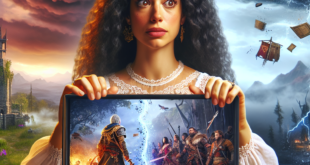
I can’t be the only one that’s had this experience: I’ll be passing time scrolling through my Instagram feed when all of a sudden, my iPhone’s screen cranks the brightness up to 11 for a random video clip or reel. It’s worse if you’re in a dark environment or dimly lit bar when this happens because these bursts ignore your brightness settings and can get pretty unpleasant for your eyes.
The reason this happens is that people are increasingly sharing HDR (high dynamic range) videos on social platforms — whether they know it or not — and when your fancy smartphone plays them, the display goes into overdrive to showcase, in Apple’s words, the “true-to-life color and contrast” made possible by HDR. But the thing you’ll notice most of all, more than anything having to do with colors, is your screen getting very bright whether you want it to or not.
Premium smartphones have been able to record HDR video for a few years now. Apple uses Dolby Vision, while Samsung favors HDR10 Plus. But I don’t think these companies have effectively taught customers where and when the capability is actually useful — and when it’s better left off. Lots of people leave their camera app on the default settings, and in that scenario, your iPhone will happily capture your concert recordings or vacation memories in HDR. But you might not realize that once you upload those videos to Instagram or other apps like Reddit, they’ll hijack the screen brightness for anyone that’s watching with an HDR-capable iPhone.
I’m noticing this kind of thing more and more over the last several months. Go look at any of The Rock’s recent Instagram videos (like this adorable one) on an iPhone, and you’ll see what I mean. Why is this in HDR? What’s being gained? I’d argue it looks better when I watch on a desktop browser in SDR without distractingly-bright highlights pulling my attention away from the subject. That feels antithetical to who I am as a display and home theater nerd. When HDR is used well and for the right scenes, the resulting videos can be stunning. But our phones are a little too eager to lean on it for normal, everyday clips.
We’re overdue for system-wide HDR preferences, Apple
I’d argue that HDR video recording went mainstream before many consumers even really understood the best circumstances for using it, and now we’re hitting the growing pains that come with such an aggressive push from phone makers.
I doubt Apple will dial anything back or get more conservative over when video is captured in HDR. This is the company that no longer lets you turn off HDR at all for still photos on current iPhones. I still don’t understand that.
But a short-term “fix” could just be giving iPhone owners more control. There’s no toggle to disable HDR playback within Instagram. You can’t turn off this often-too-bright playback experience system-wide anywhere in iOS settings. These seem like significant oversights when you consider it’s been over two years since the iPhone 12 lineup introduced Dolby Vision recording. Just because something was captured in HDR doesn’t mean I want to see it that way or that my display preferences should be thrown out the window. I expect intensely bright and vivid HDR from the TV in my living room. When using a mobile device, there are times when I definitely don’t need that.
For now, the best way to avoid these random brightness ramps is to activate iOS’ low power mode, which will make HDR videos play normally. But there’s got to be a simpler, more direct solution than that.
 Latest Breaking News Online News Portal
Latest Breaking News Online News Portal





